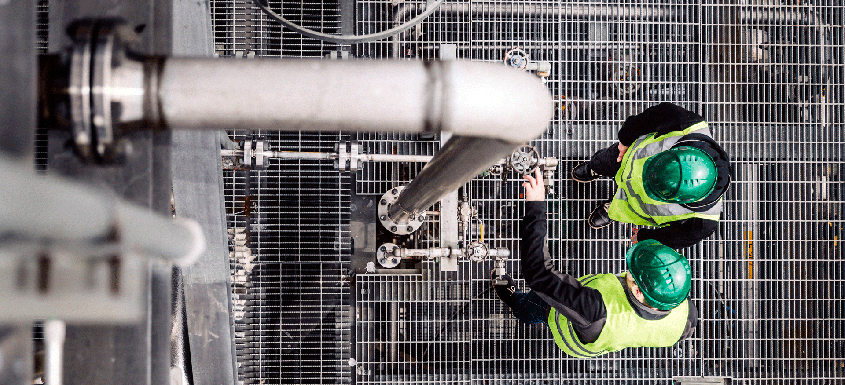Reliability is a term that has become more commonly used in the industry.
Many organizations are using this word to describe their predictive maintenance department.
To me, reliability has always encompassed the measurement of manufacturing efficiency and includes operations, maintenance, engineering and spare parts/stores as the major players. Together these departments shall deliver manufacturing, or production, reliability.
We know that better reliability results in:
- Improved safety
- Faster manufacturing throughput
- Lower manufacturing cost
- Lower energy consumption
There are many ways to measure manufacturing reliability. This is the simplest equation:
Quality Volume Manufactured
_______________________________________
Capacity Quality Volume
However, it is beneficial to break up this equation into three elements and multiply them:
(% Quality Volume) x (% Time Efficiency) x (% Speed Performance)
If each of these elements are 95% the total manufacturing reliability is 85.7%.
By measuring these three elements it will be easier to pinpoint where the biggest losses are.
It is not uncommon for plants to only measure the time element of this formula often expressed as % availability or as an example: “% time we have sheet on reel” for a paper machine. To me this is wrong because you might have high availability, but you might have to scrap all products made or you can’t run at full speed.
I see the equipment reliability component of manufacturing reliability as the revenue side of what the maintenance organization does and the process reliability component as the result of what the operations organization does.
The maintenance organization is supported by efficient and cost-effective stores, and engineering is responsible for cost-effective design including maintainability and reliability considerations. The roles of these departments must be clearly defined, and their joint goal should be manufacturing reliability.
They should have an equal partnership, not an internal customer relationship.
Organizational Silos
One of the biggest obstacles to overcome in an organization is silos set up with different goals.
For the engineering organization, it is not necessarily so that the lowest life cycle cost (LCC) over more than 15 years of ownership is most important even if costs (as a result of poor maintainability and reliability design) might consequently be much higher than necessary during the years the equipment is owned and operated. In most organizations the project manager is driven by rewards for projects coming in on time and under budget, not by lower LCC.
Bridging the gap between CAPEX and OpEx budgets is the biggest challenge to overcome in practicing true Asset Management.
Key operations and maintenance people are often not included in the early specification phase of a project and many good ideas are lost. It is not uncommon that basic documentation such as detailed bills of materials (BOM) is left out.
This will lead to difficulty in optimizing stores and create much extra work documenting those bills of materials later. The lack of a complete BOM also causes significant inefficiencies in maintenance performance because planning cannot be done well, and parts and materials can’t be found easily.
- The operations organization is rewarded according to the volume manufactured.
- The maintenance organization is measured primarily by cost as set in the maintenance budget.
- Stores is often challenged to reduce inventory value.
It is not necessarily so that these measurements are wrong, but if applied in organizational silos they lead to sub-optimization and total results will suffer.
To improve this situation, plants need to rethink their departments’ roles and goals and bring them together in a partnership work system with a common goal.
This goal should be expressed as manufacturing competitiveness, e.g., quality volume/cost (instead of cost/volume). Measuring it this way will put the focus on manufacturing reliability first and cost second.
Cost is very important, but the fact is that increased reliability reduces costs, not the other way around. All other goals and performance indicators should actively support this goal.
At IDCON, we understand the pressure you face trying to build a reliable plant.
We provide side-by-side reliability and maintenance consulting and training designed to keep your equipment running.
For over 45 years, we’ve partnered with 100s of manufacturing plants around the world to eliminate the costs and the pressure caused by unreliable equipment. And we’d love to do the same for you.
Contact us today to see how we can help you keep your plant running.
About the Author
 Christer Idhammar
Christer Idhammar
Founder, IDCON INC Reliability and Maintenance Management Guru













